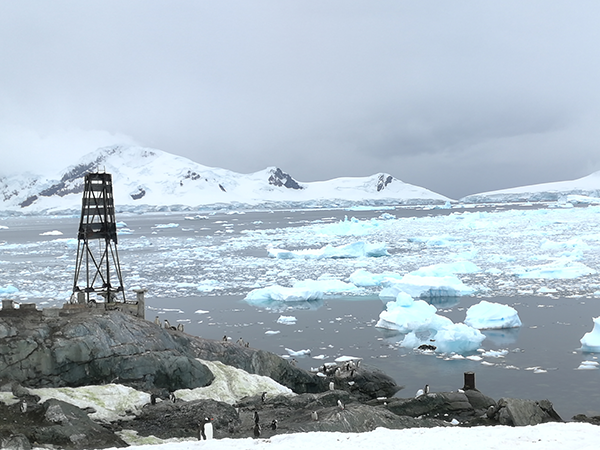El Niño, as the strongest indicator of interannual climate variability, has a substantial impact on climate in the Antarctic, particularly in the West Antarctic.
 Photo taken during Antarctica Scientific Expedition at Almirante Brown Antarctic Base in 2019. Image Credit: Shuanglin Li
Photo taken during Antarctica Scientific Expedition at Almirante Brown Antarctic Base in 2019. Image Credit: Shuanglin Li
However, a recent study found that the El Niño-Southern Oscillation (ENSO, which relates to the broader climate pattern that includes the phases of El Niño and La Niña) has no effect on precipitation in West Antarctica, which contradicts its major impact on the West Antarctic climate via modulation of the Amundsen Sea low pressure system via Rossby wave trains (atmospheric or oceanic waves that form due to the Earth’s rotation).
Prof. Shuanglin Li of the Chinese Academy of Sciences’ Institute of Atmospheric Physics and Xueyang Chen and Dr. Chao Zhang of the China University of Geosciences, Wuhan, China, conducted the research, which was published in Atmospheric and Oceanic Science Letters on June 5th, 2023.
It clarifies the effects of various types of El Niño events on precipitation over West Antarctica and the Antarctic Peninsula, as well as the tenuous link between the two.
Previous studies show that precipitation over West Antarctica, especially the Antarctic Peninsula, is less correlated with El Niño. One possible reason is that these studies did not classify El Niño into its two known sub-types: Eastern Pacific (EP) and Central Pacific (CP) El Niño.
Shuanglin Li, Professor, Institute of Atmospheric Physics, Chinese Academy of Sciences
When it comes to the precipitation response they cause, EP and CP events cancel each other out because they have similar effects on precipitation over the Amundsen-Bellingshausen seas but opposite effects on precipitation over the Weddell Sea, including the eastern Antarctic Peninsula. This explains the ambiguity surrounding ENSO's effects on precipitation over the Antarctic Peninsula.
An anomalous anticyclone and cyclone form over the Ross–Amundsen–Bellingshausen seas and the Weddell Sea, respectively, as a result of EP events forcing two branches of Rossby wave trains to propagate southeastward and converge in West Antarctica. As a result, abnormal southerly winds develop over the Bellingshausen–Weddell seas, which reduce precipitation there.
In comparison, only one weak and westward-shifted Rossby wave train is stimulated under a CP event, which induces an anomalous anticyclone and cyclone in the Ross–Amundsen seas and Bellingshausen–Weddell seas. Anomalous southerly winds reduce the precipitation over the Amundsen–Bellingshausen seas, while anomalous northerly winds increase the precipitation over the Weddell Sea.
Xueyang Chen, Study First Author, China University of Geosciences
Journal Reference:
Chen, X., et al. (2023). Distinct impacts of two kinds of El Niño on precipitation over the Antarctic Peninsula and West Antarctica in austral spring. Atmospheric and Oceanic Science Letters. doi.org/10.1016/j.aosl.2023.100387.